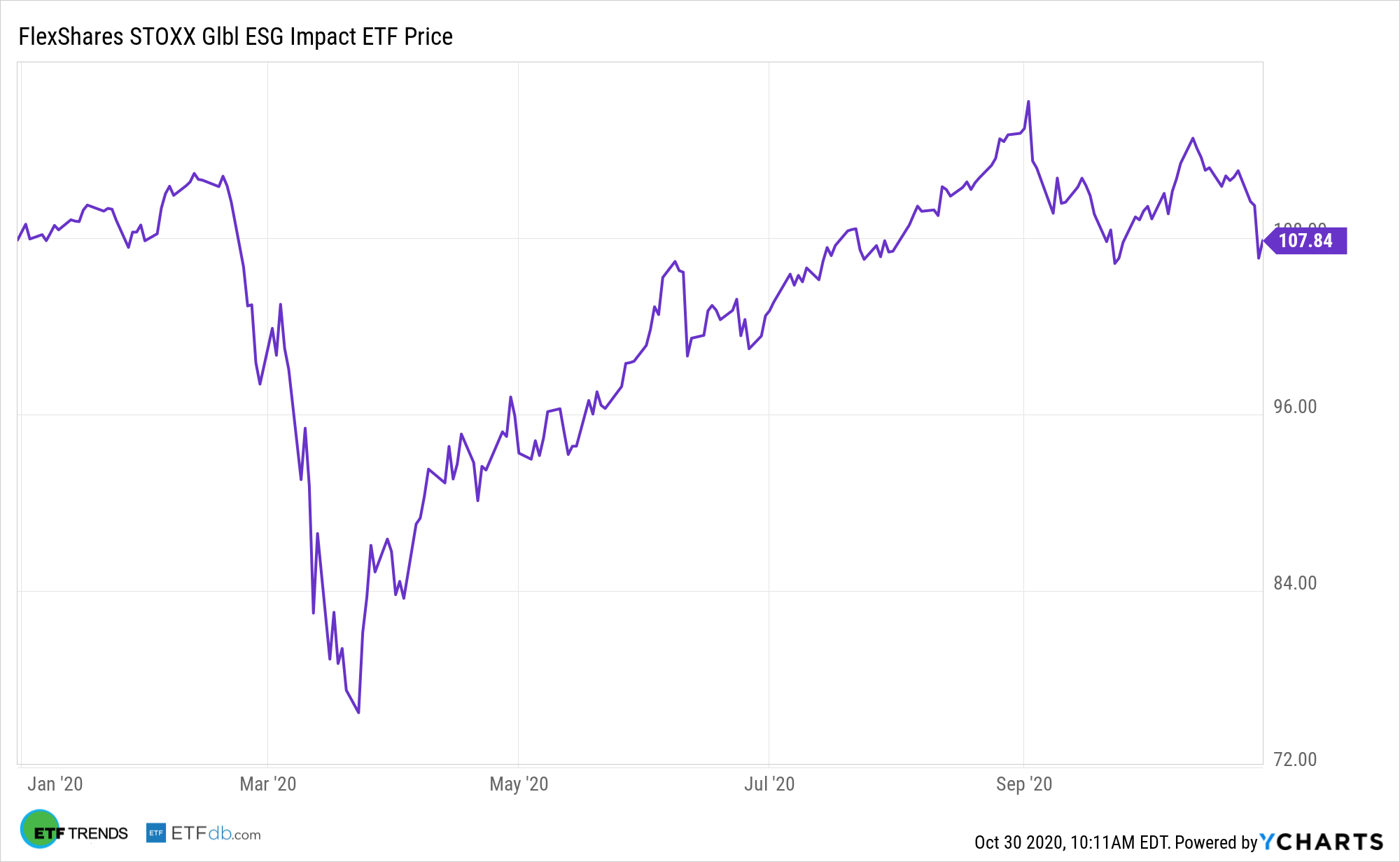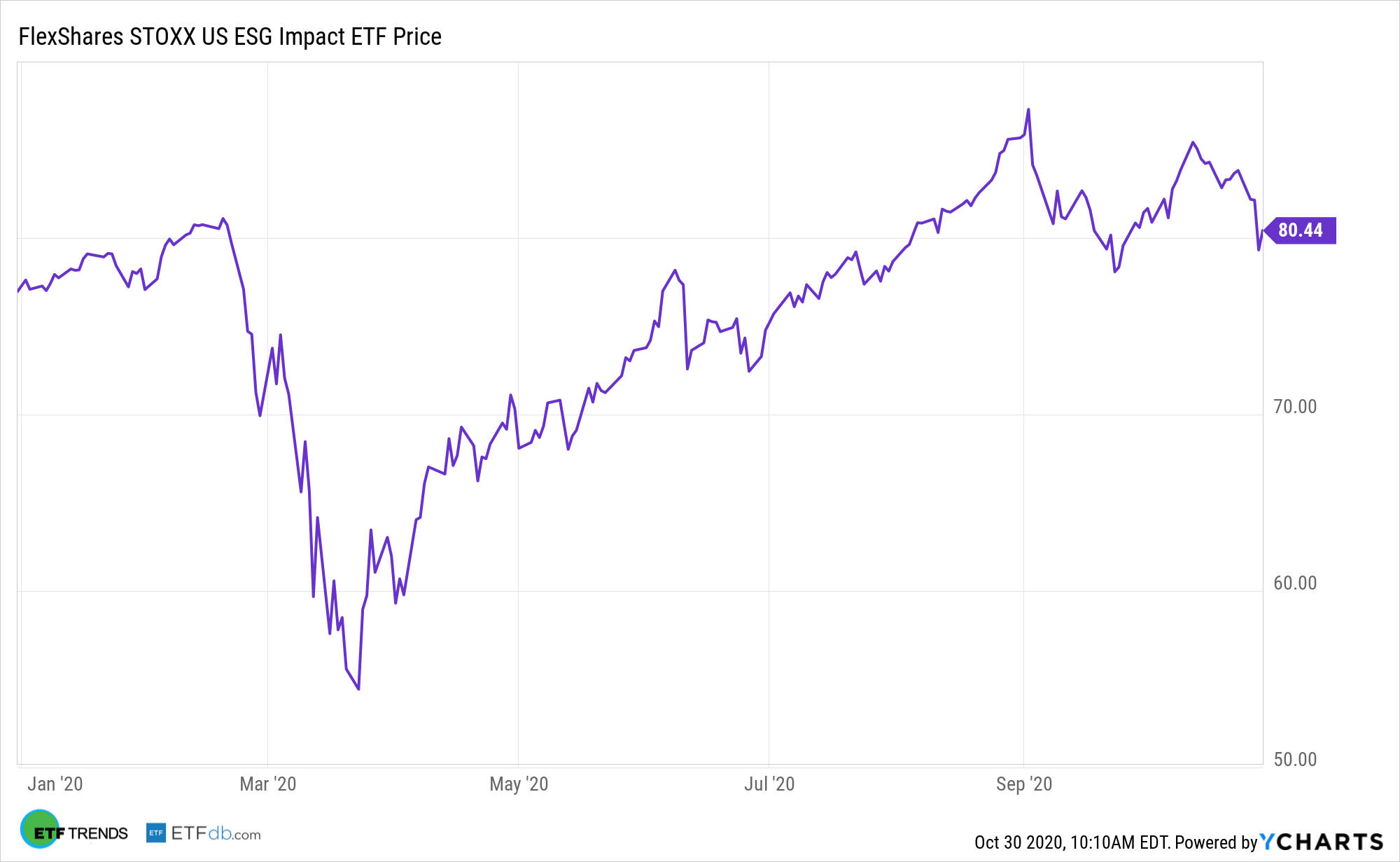Data confirm advisors and investors are increasingly fond of sustainable investment strategies, including environmental, social and governance (ESG) exchange traded funds, a theme that’s providing ballast to ETFs such as the FlexShares STOXX US ESG Impact Index Fund (CBOE: ESG) and the FlexShares STOXX Global ESG Impact Index Fund (CBOE: ESGG).

As the world grapples with the coronavirus pandemic, heightened social unrest, and volatile climate change, investors have shifted into socially responsible investments and exchange traded fund strategies that track environmental, social and governance factors.
“Assets in sustainable mutual funds and exchange-traded funds globally hit a record $1.2 trillion in the third quarter, up 19% from the second quarter, according to Morningstar. In the U.S., assets in sustainable funds jumped to $179 billion, up 12.5% from $159 billion at the end of June,” reports Leslie Norton for Barron’s.
However, some critics have warned that investors may be making the jump without examining their landing spots. The ESG label is not fully standardized or regulated by the United States, so no one can agree on how to precisely define ESG components.
The Ever-Evolving ESG Landscape
FlexShares’ ESG seeks investment results that correspond generally to the price and yield performance, before fees and expenses, of the STOXX® USA ESG Impact Index. The underlying index is designed to reflect the performance of a selection of companies that, in aggregate, possess greater exposure to ESG characteristics relative to the STOXX® USA 900 Index, a float-adjusted market-capitalization weighted index of U.S.- incorporated companies. Under normal circumstances, the fund will invest at least 80% of its total assets in the securities of the underlying index.

“In the U.S., net flows year to date total $30.7 billion. Equity funds accounted for 74% of the flows in the third quarter. Meanwhile, passive funds attracted 71% of overall flows,” according to Morningstar.
“There have been 53 sustainable funds opened in the U.S. this year, bringing the number to 367,” reports Barron’s.
The recent outperformance in the ESG category may have also contributed to the increased interest for this sustainable investment theme. According to a recent Nuveen survey, 53% of respondents cited better returns as their reason for choosing responsible investing, while only 51% were more interested because of this year’s natural disasters.
The widespread proliferation of environmental, social and governance investments will require global data standards and regulations to further progress.
Give the breadth of various ESG indices, regulators and policy makers are concerned that companies will embark on “rating shopping” tours to pick the ESG index provider for an index that best suits their ESG narrative.
For more on multi-asset strategies, please visit our Multi-Asset Channel.
The opinions and forecasts expressed herein are solely those of Tom Lydon, and may not actually come to pass. Information on this site should not be used or construed as an offer to sell, a solicitation of an offer to buy, or a recommendation for any product.

